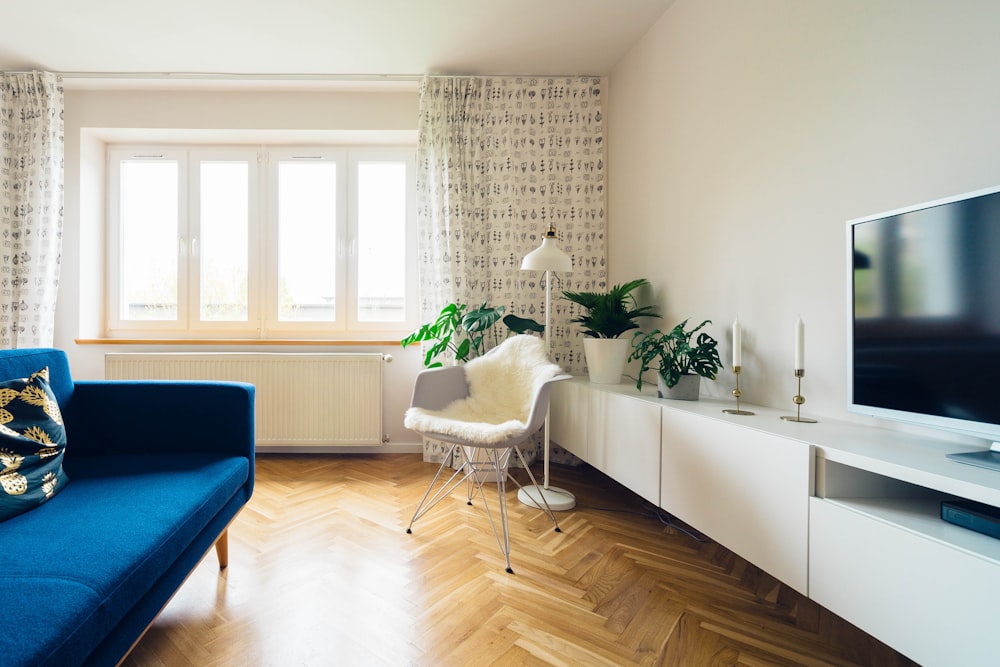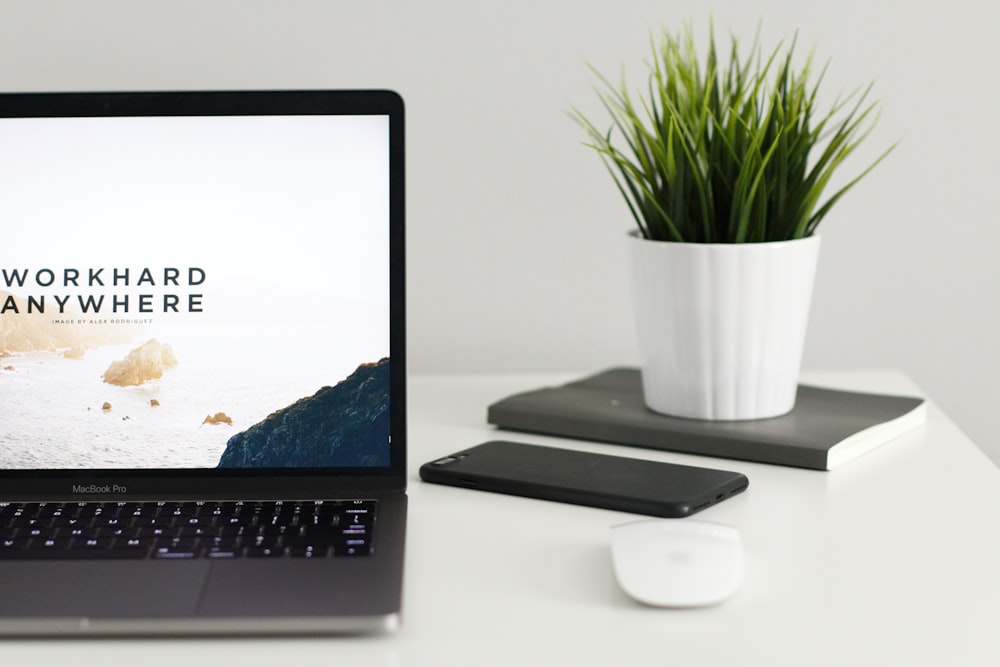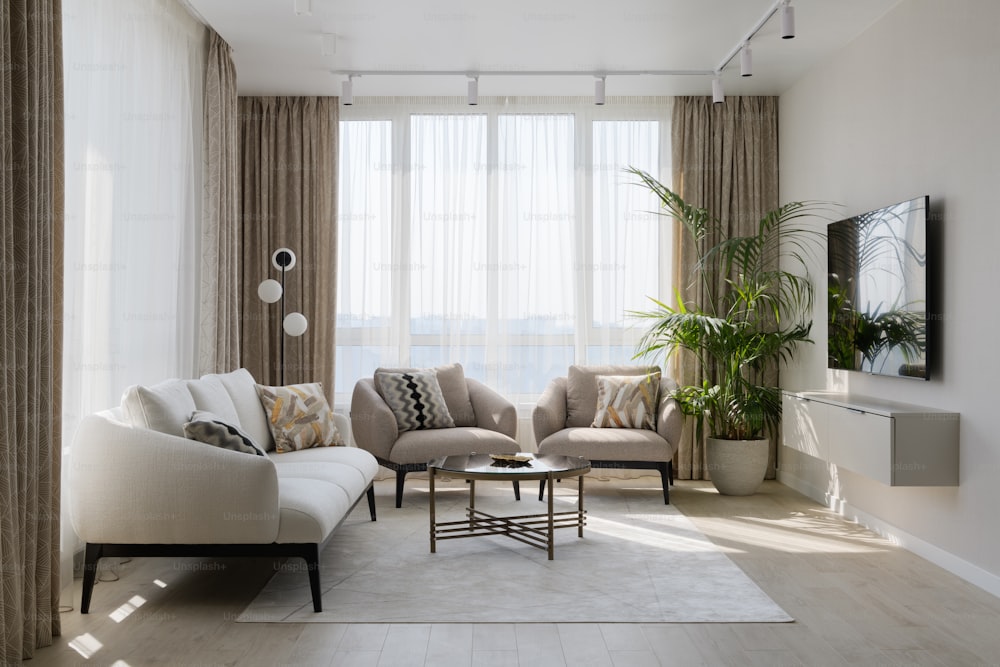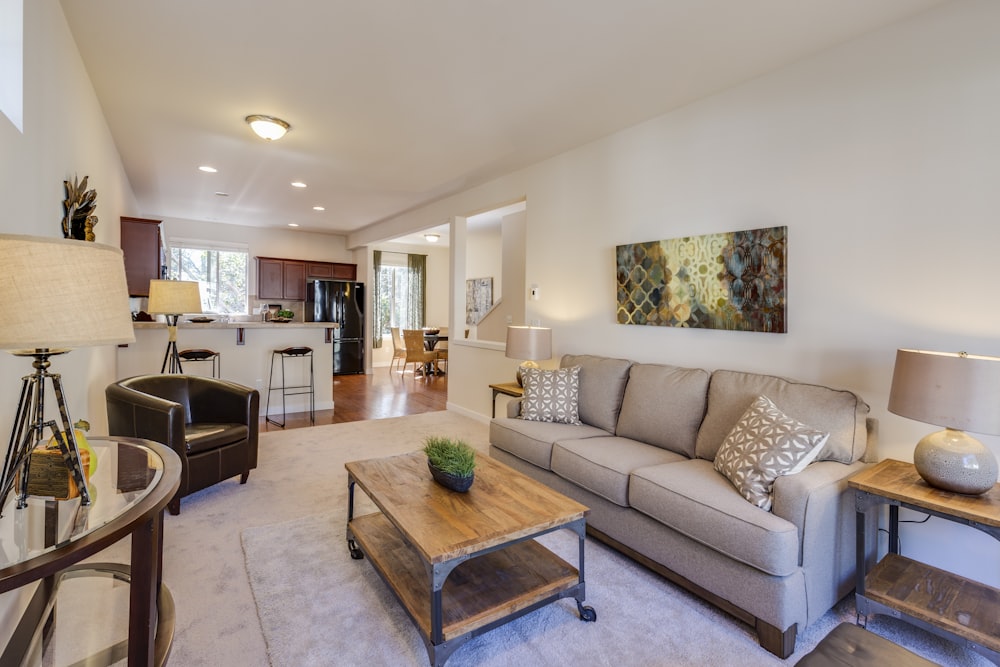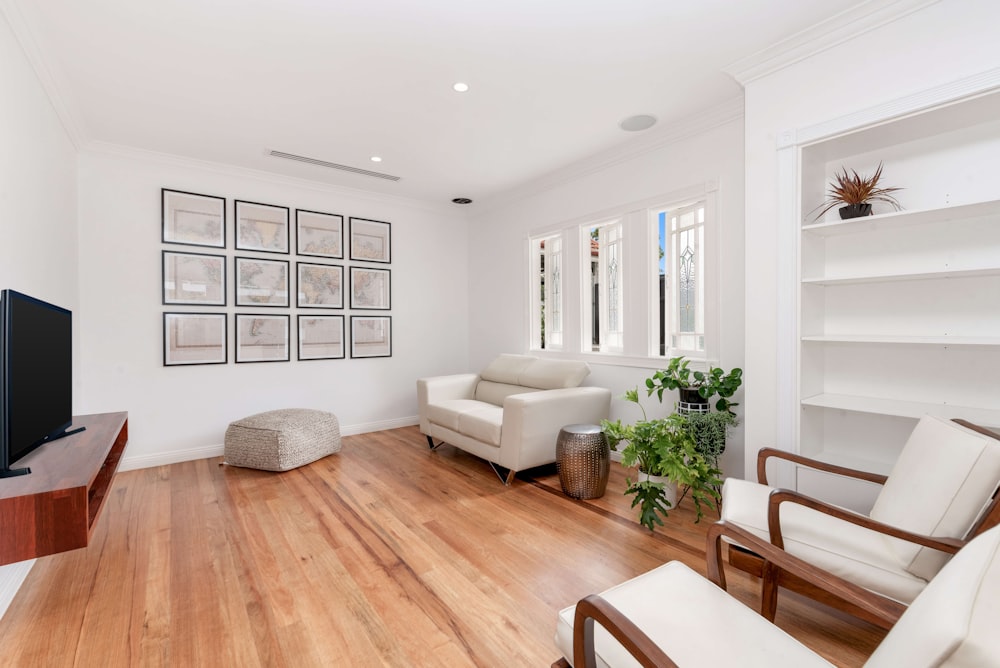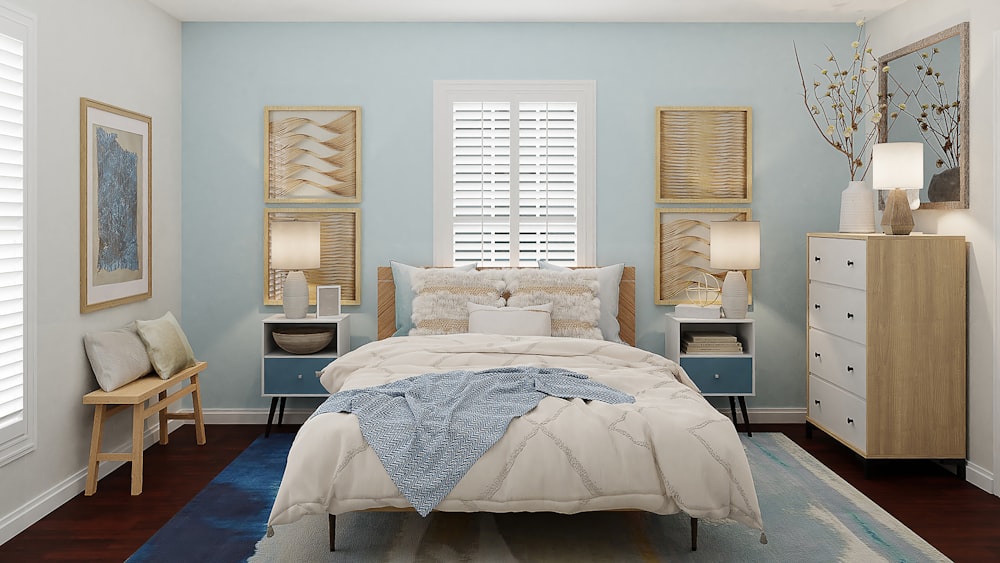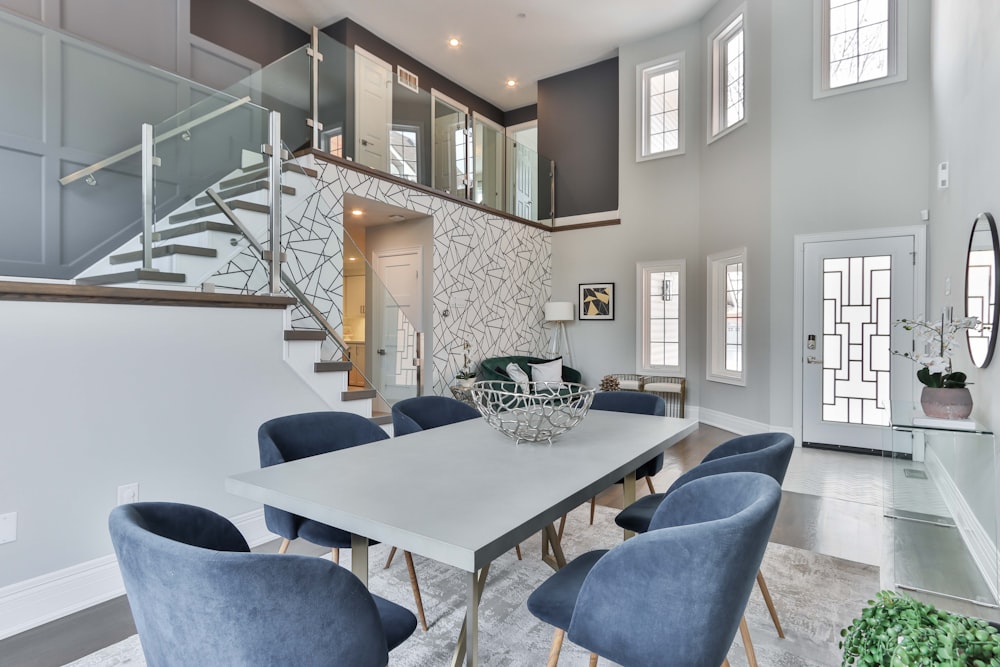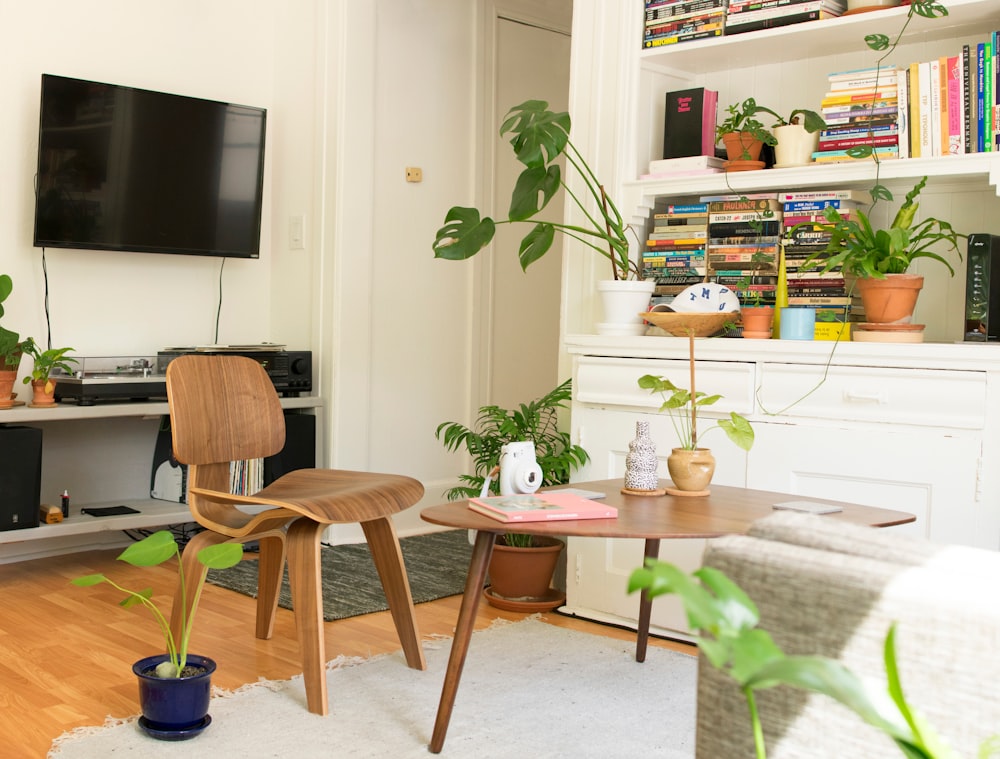Welcome to the world of minimalist design! In a world filled with clutter and distractions, minimalist design offers a breath of fresh air and a sense of serenity. If you’re someone who craves simplicity, wants to declutter your home, and create a peaceful haven, then minimalist design is for you.
Principles for Creating a Clutter-Free Home
Minimalist design is not just about getting rid of excess stuff; it’s about creating a space that is functional, visually appealing, and free from unnecessary distractions. Whether you live in a small apartment or a spacious house, embracing minimalist principles can transform your living space into a calming sanctuary.
In this article “Principles for Creating a Clutter-Free Home”, we’ll explore the essential principles of minimalist design and provide you with practical tips to create a clutter-free home. From decluttering techniques to choosing the right furniture and decor, we’ll guide you step by step on your minimalist journey. So, let’s dive in and discover the beauty of simplicity!
Understanding Minimalism
Defining Minimalist Design
Minimalism is a design philosophy that embraces simplicity and functionality. It focuses on removing excess and unnecessary elements to create a clean and clutter-free space. In a minimalist home, every item serves a purpose and adds value to the overall aesthetic. This design approach promotes a sense of calm, balance, and order.
At its core, minimalism encourages us to strip away the non-essential and keep only what truly matters. It is about finding beauty in simplicity and embracing a more intentional way of living. When it comes to minimalist design, less is definitely more.
Benefits of Minimalist Living
Embracing a minimalist lifestyle can bring about numerous benefits beyond just a clutter-free home. Here are some key advantages of minimalist living:
- Reduced Stress: A cluttered environment can contribute to feelings of overwhelm and anxiety. By simplifying your surroundings, you can create a more peaceful and serene atmosphere, promoting mental clarity and relaxation.
- Increased Productivity: A minimalist space encourages focus and concentration. With fewer distractions and visual clutter, you can better concentrate on your tasks and accomplish more in less time.
- Improved Well-being: Clutter has been associated with increased cortisol levels and decreased overall well-being. Minimalist living can promote a sense of calm and contentment, leading to improved mental and emotional health.
- Financial Freedom: Adopting a minimalist lifestyle can save you money in the long run. By being intentional about your purchases and avoiding unnecessary expenses, you can free up financial resources for things that truly matter to you.
- Environmental Sustainability: Minimalism aligns with sustainable living practices by encouraging conscious consumption and reducing waste. By owning fewer possessions and prioritizing quality, you can contribute to a more sustainable future for our planet.
By understanding the principles of minimalism, you can begin to transform your home into a haven of simplicity, functionality, and beauty. The next step is to declutter your space and create a minimalist environment that reflects your values and needs.
Decluttering Your Home
Decluttering your home is a crucial step in creating a minimalist living space. By identifying and eliminating unnecessary items, organizing essential belongings, and creating functional storage solutions, you can achieve a clutter-free and serene environment. Here are some tips to help you declutter your home effectively:
Identifying and Eliminating Unnecessary Items
- Take a systematic approach: Start by going room by room and tackle one area at a time. This will prevent you from feeling overwhelmed and help you stay focused.
- Ask yourself the right questions: When deciding whether to keep or let go of an item, ask yourself if it brings you joy, serves a practical purpose, or holds sentimental value. If not, it’s time to say goodbye.
- Be realistic: Be honest with yourself about items that are no longer useful or relevant to your current lifestyle. Holding onto things “just in case” often leads to unnecessary clutter.
- Donate or sell: Consider donating gently used items to local charities or selling them online. This way, someone else can benefit from them, and you can free up space in your home.
Organizing Essential Belongings
- Categorize and sort: Group similar items together to make them easier to organize and find. For example, keep all your books on one shelf or dedicate a drawer for office supplies.
- Use storage solutions: Invest in storage containers, baskets, and bins to keep your belongings organized and easily accessible. Clear plastic containers are particularly useful as they allow you to see what’s inside without opening them.
- Label and prioritize: Label your storage containers to make it easy to find specific items. Also, prioritize the items you use most frequently by keeping them within reach.
Creating Functional Storage Solutions
- Utilize underutilized spaces: Make the most of the space you have by using underutilized areas such as the space under your bed or stairs. These spaces can be used to store items that are used less frequently.
- Utilize vertical space: Install shelves or wall-mounted storage solutions to maximize vertical space. This not only provides additional storage but also creates an illusion of a larger and more open space.
- Get creative: Look for innovative storage solutions that blend seamlessly with your decor. For example, choose furniture pieces with built-in storage, such as ottomans with hidden compartments or coffee tables with drawers.
Remember, decluttering is an ongoing process, and it’s essential to regularly assess and reevaluate your possessions. By embracing a minimalistic mindset and staying mindful of what you bring into your home, you can maintain a clutter-free space and create a peaceful and relaxing environment.
Simplifying Furniture and Decor
When it comes to creating a clutter-free and minimalist home, simplifying your furniture and decor choices is key. By choosing clean and simple designs, prioritizing quality over quantity, and incorporating natural and sustainable materials, you can achieve a minimalist aesthetic that is both stylish and functional. So, let’s dive into the essential principles of simplifying furniture and decor for a clutter-free space:
Choosing Clean and Simple Designs
- Opt for furniture and decor pieces with sleek lines and minimal ornamentation.
- Look for minimalist designs that have clean and uncluttered shapes.
- Avoid furniture and decor that are overly ornate or have excessive detailing.
- Aim for a minimalist aesthetic by choosing pieces that have a timeless and understated elegance.
Prioritizing Quality over Quantity
- Instead of filling your space with multiple low-quality items, invest in a few high-quality pieces that will stand the test of time.
- Look for furniture and decor that are made from durable materials and are built to last.
- Quality pieces not only add sophistication to your space but also reduce the need for constant replacements.
Incorporating Natural and Sustainable Materials
- Opt for furniture and decor made from natural materials such as wood, bamboo, or rattan.
- These materials not only add an organic and calming element to your space but also have a lower environmental impact.
- Avoid furniture and decor made from synthetic materials or those that contribute to deforestation or exploitation of natural resources.
By simplifying your furniture and decor choices, you can create a harmonious and uncluttered space that promotes a sense of calm and tranquility. Remember, minimalism is not about sacrificing style, but rather about embracing the beauty of simplicity and functionality. So, choose wisely and let your furniture and decor become a reflection of your minimalist ideals.
“The more you have, the more you are occupied. The less you have, the more free you are.” – Mother Teresa
Color Palette and Lighting
When it comes to creating a minimalist design for your home, the color palette and lighting play a crucial role in achieving a clean and clutter-free space. The right colors and lighting can enhance the overall aesthetics while promoting a sense of calm and serenity. Here are some essential principles to consider:
Opting for Neutral and Monochromatic Colors
- Neutral colors: The foundation of a minimalist color scheme is often based on neutral shades such as white, beige, gray, or taupe. These colors create a sense of simplicity and provide a blank canvas for other elements in the room.
- Monochromatic palette: To maintain a cohesive and harmonious look, consider using different shades of the same color throughout your space. This approach creates a visually pleasing and calming effect.
Utilizing Natural Light Sources
- Maximizing natural light: Embrace natural light as much as possible by keeping windows clear of heavy curtains or blinds. Allow the sunlight to flood into your space, creating a bright and airy atmosphere.
- Using sheer curtains or blinds: If privacy is a concern, opt for sheer curtains or blinds that allow light to penetrate while still maintaining a level of privacy.
Implementing Effective Lighting Techniques
- Layered lighting: Create a well-balanced lighting scheme by incorporating different types of lighting. This includes ambient lighting for overall illumination, task lighting for specific activities, and accent lighting to highlight architectural features or artwork.
- Minimalist light fixtures: Choose light fixtures that are sleek, simple, and in line with the overall minimalist aesthetic. Avoid ornate or overly decorative designs that may clutter the visual space.
Remember, the goal is to create an atmosphere that feels open, spacious, and uncluttered. By opting for a neutral color palette and maximizing natural light sources, you can instantly transform your space into a tranquil sanctuary. Don’t forget to implement effective lighting techniques to enhance the functionality and ambiance of your minimalist home.
Creating an Open and Airy Space
When it comes to creating a minimalist home, one of the key goals is to create an open and airy space that feels light and spacious. This not only contributes to the overall aesthetics of your home but also promotes a sense of calm and tranquility. Here are some essential principles to help you achieve an open and airy space in your minimalist design:
Arranging Furniture for Flow and Space
- Keep it simple: Opt for furniture pieces that have clean lines and a minimalistic design. Avoid bulky or ornate furniture that can make a space feel cramped and cluttered.
- Consider scale and proportion: Choose furniture that is appropriately sized for your space. Oversized furniture can overwhelm a room, while furniture that is too small can make it feel empty and disjointed.
- Create a focal point: Arrange furniture around a central focal point, such as a fireplace or a large window. This helps to anchor the room and create a sense of balance.
- Leave space to breathe: Allow for plenty of open space between furniture pieces. Avoid overcrowding your room with too much furniture, which can make it feel cramped.
Maximizing Vertical and Horizontal Space
- Utilize wall space: Consider mounting shelves or wall cabinets to keep the floor space clear. This not only adds storage but also creates a sense of openness.
- Hang curtains strategically: Opt for sheer or light-colored curtains that allow natural light to penetrate the room. Hang curtains close to the ceiling to create the illusion of height and make the room feel more spacious.
- Choose tall furniture: When selecting furniture, consider pieces that are taller rather than wider. This helps to draw the eyes upward and makes the room feel taller.
- Utilize mirrors: Mirrors can be a powerful tool in creating the illusion of space. Hang mirrors on walls opposite windows to reflect natural light and make the room appear larger.
Minimizing Visual Clutter
- Keep surfaces clear: Avoid cluttering surfaces with unnecessary items. Keep countertops, tables, and shelves clear, except for a few carefully chosen decorative pieces.
- Opt for open and transparent storage: Consider using open shelving or transparent storage containers to create a sense of openness and avoid visual clutter.
- Conceal cords and cables: Tangled cords can be an eyesore and create visual clutter. Use cord management solutions or hide them behind furniture to keep them out of sight.
Creating an open and airy space in your minimalist design is all about simplicity and prioritizing the essential elements. By arranging furniture strategically, maximizing vertical and horizontal space, and minimizing visual clutter, you can transform your home into a peaceful oasis of minimalism.
Also Read: Minimalist Workspace Design : Maximizing Productivity in 2023
Inspiring Bedroom Designs for Small Spaces
When it comes to creating a clutter-free home, one of the key aspects to consider is storage. Having adequate storage solutions can help keep your space organized and ensure that everything has its place. In a minimalist design, it’s important to maximize space and minimize visual clutter. To achieve this, here are some multi-purpose and hidden storage solutions to consider:
Utilizing Furniture with Built-in Storage
- Furniture pieces with built-in storage can be a great way to make the most of your space. Look for options such as storage ottomans, bed frames with drawers, or coffee tables with hidden compartments.
- These furniture pieces serve a dual purpose by providing functionality while also discreetly storing items out of sight.
Incorporating Wall-Mounted or Floating Shelves
- Wall-mounted or floating shelves are an excellent solution for displaying your belongings while keeping them organized. They not only add storage space but also create visual interest on your walls.
- Consider installing shelves in areas such as the living room, bedroom, or kitchen to showcase books, decorative items, or even kitchen essentials like spices and cookware.
Investing in Space-Saving Organizer Systems
- Storage systems that maximize space and offer versatile organization options can be a game-changer in a minimalist home. Look for options like modular closet systems with adjustable shelves and drawers or under-the-sink organizers for your bathroom or kitchen.
- These organizer systems help you maximize vertical and horizontal space, keeping everything neat and easily accessible.
By incorporating these multi-purpose and hidden storage solutions into your home, you can maintain a clutter-free environment while still having a place for all your essentials. Remember, the key is to make the most out of the available space while keeping visual clutter at a minimum.
Minimizing Digital Clutter
In today’s digital age, it’s not just our physical spaces that can become cluttered – our digital lives can also become overwhelming and cluttered. With constant notifications, numerous files, and an abundance of digital devices, it’s easy to feel overwhelmed and distracted. However, by implementing some simple strategies, you can minimize digital clutter and create a more organized and focused digital environment.
Organizing Digital Files and Folders
One of the first steps to minimizing digital clutter is to organize your digital files and folders effectively. Here are some tips to help you get started:
- Create a logical folder structure: Just like you would organize physical files into different folders, create a similar structure for your digital files. Use broad categories and subcategories to group similar files together.
- Rename files:
- Use descriptive names: Give your files names that clearly describe their contents so that you can easily identify them later on.
- Use consistent naming conventions: Establish a naming convention and stick to it. This could include using a combination of dates and keywords or using specific prefixes for different types of files.
- Use tags and metadata: Tags and metadata can help you categorize and search for files quickly. Assign relevant tags to files or use metadata features available in your operating system or software applications.
- Regularly clean up and delete unnecessary files: Take the time to periodically review your files and delete any that are no longer needed. Be sure to backup important files before deleting them.
Streamlining Digital Devices and Cables
Our digital devices and their associated cables can contribute to visual clutter and distraction. Here are some ways to streamline your digital devices:
- Digitize physical documents: Whenever possible, scan and save important documents digitally instead of keeping physical copies. This reduces paper clutter and makes files easier to manage and search for.
- Limit the number of devices: Review your digital devices such as smartphones, tablets, and laptops, and consider if you really need all of them. Simplify your digital life by minimizing the number of devices you use on a daily basis.
- Organize cables: Invest in cable management solutions such as cable ties or cable organizers to keep your cables neat and untangled. Label cables so that you can easily identify which cable belongs to which device.
Limiting Digital Distractions
The digital world is filled with distractions that can hinder productivity and focus. Here are some strategies to help you limit digital distractions:
- Turn off non-essential notifications: Disable notifications for apps or websites that are not essential or that distract you from your priorities.
- Create a dedicated workspace: Establish a designated workspace where you can focus solely on your work or important tasks. Minimize the presence of digital distractions in this area.
- Practice the Pomodoro Technique: The Pomodoro Technique involves working in focused intervals, typically around 25 minutes, followed by a short break. During your focused work periods, turn off or put aside any devices or apps that may distract you.
- Use productivity apps or browser extensions: There are numerous productivity apps and browser extensions available that can help you block distracting websites or limit your time spent on certain apps or websites.
By implementing these strategies, you can minimize digital clutter and create a more organized and focused digital environment. Remember, the goal is to create a digital space that supports your productivity and mental well-being. Start small, develop good habits, and enjoy the benefits of a clutter-free digital life.
Embracing Minimalist Lifestyle Choices
In addition to creating a clutter-free home, minimalist design also encourages a shift towards a minimalist lifestyle. Embracing minimalist lifestyle choices can have a profound impact on your overall well-being and the environment. Here are some ways to incorporate minimalist principles into your daily life:
Practicing Mindful Consumption
- Mindful consumption involves being intentional and conscious about what you consume and bring into your life.
- Before making a purchase, ask yourself if you truly need the item and if it aligns with your values and goals.
- Avoid impulsive buying and instead, take the time to research and consider alternatives.
- Focus on quality over quantity and invest in items that are built to last. This not only reduces waste but also saves you money in the long run.
- Consider borrowing or renting items instead of buying them, especially for infrequently used items.
Adopting Sustainable and Eco-Friendly Habits
- Minimalism goes hand in hand with sustainability. Consider making eco-friendly choices in your everyday life.
- Reduce waste by opting for reusable products such as water bottles, shopping bags, and food containers.
- Embrace a minimalistic wardrobe by investing in clothing made from sustainable materials and supporting ethical fashion brands.
- Reduce your carbon footprint by choosing eco-friendly transportation options such as biking, walking, or carpooling.
- Incorporate energy-saving habits at home, such as turning off lights when not in use, using energy-efficient appliances, and adjusting your thermostat to conserve energy.
Prioritizing Experiences over Material Possessions
- Minimalism encourages us to focus on experiences and relationships rather than material possessions.
- Instead of spending money on more stuff, allocate your resources towards activities, travel, and personal development.
- Create memories by exploring your surroundings, trying new hobbies, and spending quality time with loved ones.
- Shift your mindset from “buying things will make me happy” to “experiences enrich my life.”
Embracing minimalist lifestyle choices requires a shift in mindset and a commitment to living with intention. By incorporating mindful consumption, sustainable habits, and prioritizing experiences over material possessions, you can lead a more meaningful and fulfilling life. Remember, minimalism is a journey, and it’s about finding what works best for you and aligning your life with your values.
Maintaining a Clutter-Free Home
Congratulations! You’ve successfully decluttered your home and achieved that clean and clutter-free look you’ve always desired. But the journey doesn’t end there. Now comes the important task of maintaining a clutter-free home. Here are some tips to help you maintain the minimalist lifestyle you’ve embraced:
Regularly Assessing and Reevaluating Possessions
One of the key principles of minimalism is continuously assessing the items you own and ensuring that they still bring value to your life. Regularly go through your belongings and ask yourself if you still need or use certain items. If not, it may be time to let them go. Remember, minimalism is all about living with intention and surrounding yourself with things that serve a purpose.
- Set aside time every few months to assess your belongings.
- Be honest with yourself and let go of items that no longer serve a purpose.
- Donate or sell items that are still in good condition but are no longer needed.
- Keep in mind the one in, one out rule – if you bring something new into your home, be sure to let go of something similar.
Implementing Daily Cleaning and Organizing Habits
Keeping your home clutter-free requires consistent effort and maintenance. Incorporate daily cleaning and organizing habits into your routine to prevent clutter from accumulating.
- Put items back in their designated place after use.
- Develop a habit of doing a quick tidy up each day to maintain a clean and organized environment.
- Establish a cleaning schedule to ensure commonly used areas are regularly maintained.
Avoiding Impulse Purchases
One of the biggest challenges of maintaining a clutter-free home is resisting the temptation to buy unnecessary items. Before making a purchase, ask yourself if it aligns with your minimalist lifestyle and if you truly need it. Here are a few strategies to help you avoid impulse purchases:
- Create a “wish list” and give yourself a cooling-off period before making a purchase. You may find that you no longer desire the item after some time.
- Practice mindful consumption by considering the impact of your purchase on the environment, your finances, and your overall well-being.
- Prioritize experiences over material possessions. Focus on creating memories rather than accumulating stuff.
By regularly assessing your possessions, implementing daily cleaning and organizing habits, and avoiding impulse purchases, you’ll be able to maintain a clutter-free and minimalist home. Remember, minimalism is not just about the physical aspect of decluttering, but also about embracing a simpler and more intentional way of living. Keep these principles in mind as you cultivate a minimalist lifestyle.
“The space in which we live should be for the person we are becoming now, not for the person we were in the past.” – Marie Kondo
Also Read: Maximizing Space in a Minimalist Home : Organizational Tips in 2023
Conclusion
In conclusion, implementing minimalist design principles can transform your home into a clutter-free and calming sanctuary. By understanding the core concepts of minimalism, decluttering your space, simplifying furniture and decor, and optimizing lighting and color choices, you can create a minimalist haven that promotes peace and serenity. To maintain a clutter-free home, regularly assess your possessions, practice daily cleaning habits, and avoid impulse purchases. By embracing a minimalist lifestyle, you can prioritize experiences over material possessions and adopt sustainable habits.
Remember, minimalism is not just about aesthetics, but also about creating a space that aligns with your values and promotes a sense of tranquility. By following the essential principles of minimalist design, you can create a space that reflects your personality, promotes mindfulness, and enhances your overall well-being.
Minimalist Home Guru is your go-to resource for all things minimalism. Whether you’re a new home buyer or simply looking to declutter your space, we provide guidance on decluttering, selecting clean-lined furniture, and creating a calming and clutter-free living space. Visit our website here to learn more about our services and find inspiration for your minimalist journey.
Remember, less is more, and a minimalist home can bring you a sense of peace and tranquility that will positively impact every aspect of your life.
“Simplicity is the ultimate sophistication.” – Leonardo da Vinci
Frequently Asked Questions
- What is minimalist design?Minimalist design is a style that focuses on simplicity, functionality, and eliminating excess. It involves using clean lines, neutral colors, and minimal decorative elements to create a clutter-free and visually appealing space.
- What are the essential principles of minimalist design?The essential principles of minimalist design include: 1. Simplicity – using only essential elements, 2. Functionality – ensuring each item serves a purpose, 3. Clutter-free – eliminating unnecessary objects, 4. Clean lines – emphasizing simplicity, and 5. Neutral color palette – using mostly whites, grays, and earth tones.
- How can minimalist design benefit a home?Minimalist design can benefit a home by creating a sense of calm and tranquility, reducing visual clutter, enhancing the flow of space, promoting organization, and making cleaning and maintenance easier.
- Can I incorporate personal items in a minimalist design?Yes, you can incorporate personal items in a minimalist design as long as they serve a purpose and bring you joy. However, it’s important to avoid excessive sentimental attachments and keep only what you truly need or cherish.
- What are some tips for achieving a clutter-free home?To achieve a clutter-free home, some tips include: 1. Declutter regularly, 2. Optimize storage space, 3. Prioritize functionality, 4. Avoid impulse buying, and 5. Embrace minimalism gradually to avoid overwhelm.


